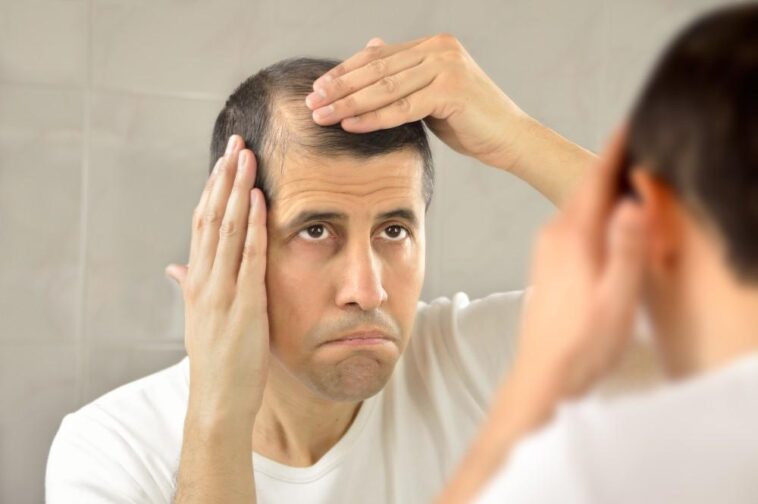Both men and women can feel down and lose confidence when they start losing their hair. Losing your hair can be very bad for your health and self-esteem, even if it’s just due to genetics, aging, or hormone changes. The good news is that hair loss treatments and solutions have come a long way in the past few years, giving people hope and the chance for a bigger head of hair.
This article will teach you about hair loss treatment and solutions, how surgical methods have changed, and the science behind hair growth. It will also discuss the psychological effects of hair loss and how important it is to build confidence again.
Why People Lose Their Hair
Before looking into treatments and answers for hair loss, it’s important to know why this problem happens in the first place. Many things can cause hair loss, such as:
1. Genetics
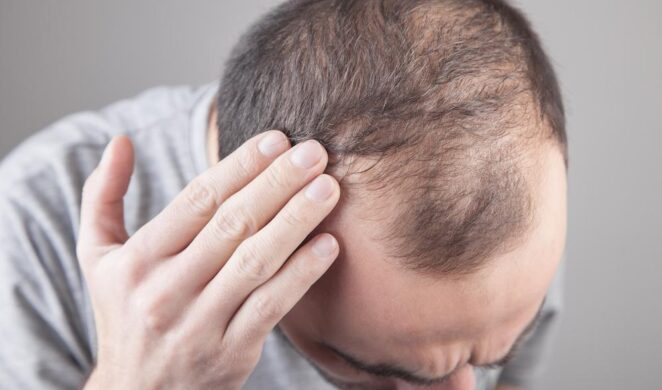
Genes cause both male pattern baldness (androgenetic alopecia) and female pattern baldness. Men and women lose their hair for these reasons most of the time. Hair loss can happen at different times and in different ways depending on your genes. This often starts with a receding hairline and a thinning head in men. Women often have widespread thinning, which often starts at the part.
2. Changes in Hormones
Changes in hormones can be a major cause of hair loss. These changes can happen during pregnancy, menopause, or when your thyroid isn’t working right. For instance, many women’s hair gets thicker and shiner while pregnant.
On the other hand, hormonal changes can cause hair loss more than normal after giving birth. Hair loss can also be caused by hormonal changes, like those seen in people with polycystic ovary syndrome (PCOS) or thyroid problems.
3. Health Problems
Some health problems can make you lose your hair. An autoimmune disease called alopecia areata makes hair fall out in small, round spots. You can also lose your hair if you don’t treat scalp diseases like ringworm. Hair loss can also be caused by disorders like trichotillomania, in which people pull out their hair without reason.
4. Drugs
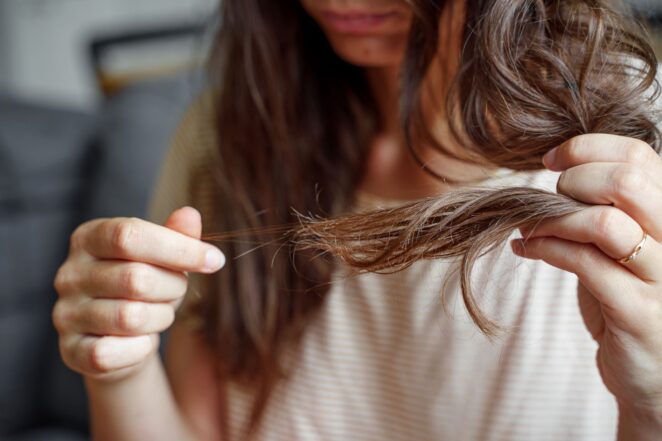
As a side effect, some drugs can make you lose your hair. Medication that thins the blood, some medicines, and chemotherapy drugs can all cause hair loss. Most of the time, this hair loss is brief and goes away when the medicine is stopped. Even so, it can still be upsetting to the emotions.
5. Stress
Being under a lot of stress and worry can make you lose your hair, called telogen effluvium. There are three stages in the hair growth cycle: anagen (growth), catagen (rest), and telogen (loss). Many hair follicles can move into the telogen phase when the body is under a lot of stress. This can cause obvious hair loss. Luckily, this hair loss can usually be fixed by lowering your worry.
6. Nutritional Deficiencies
Hair loss can happen if you don’t get enough of certain nutrients, like iron and protein. Keratin is a protein that makes up most of the hair. If you don’t eat enough protein, your body may limit protein by stopping hair growth.
In the same way, not getting enough iron can stop the hair cells from getting enough oxygen and nutrients, which can cause hair loss. To keep your hair healthy, you must eat a varied diet of vitamins and minerals.
Newer ways to treat hair loss
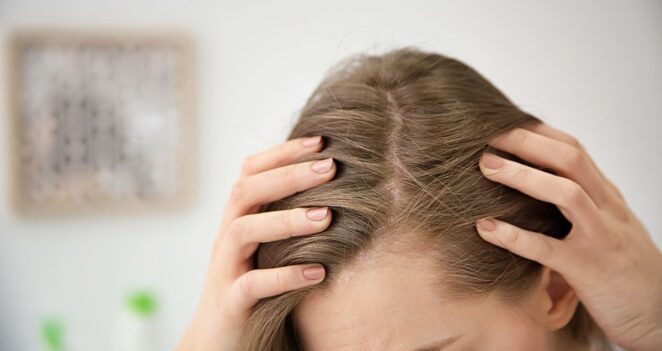
Over the years, doctors and experts have come up with several ways to treat hair loss of different types and causes over the years. These methods aim to slow down or stop hair loss, speed up hair growth, and help people feel better about their self-esteem. Look more closely at some of the most popular high-tech ways to treat hair loss:
1. Topical Medicines
Topical medicines you can buy over the counter, like minoxidil, have been shown to help hair grow. Minoxidil is a drug that the FDA has cleared. It comes in liquid or foam form and is put on the scalp directly. It might help stop hair loss and make new, thicker hair grow. Minoxidil can be bought without a prescription and a prescription.
It’s usually used twice daily, and many have seen good results. Some people may see different effects, but it works best for people just starting to lose their hair.
2. Medicines You Need a Prescription
Finasteride is an approved oral prescription drug for treating male pattern baldness. It works by blocking the hormone dihydrotestosterone (DHT), which makes hair follicles shrink in people genetically more likely to get hair loss. DHT is a different form of testosterone that plays a big role in male pattern baldness.
Finasteride helps stop testosterone from turning into DHT, slows hair loss, and encourages growth. It is usually taken once a day, but it’s important to remember that it’s mostly for guys and might not be right for women, especially those who are pregnant or trying to get pregnant.
3. Platelet-Rich Plasma (PRP) Treatment
In PRP treatment, a small amount of the patient’s blood is taken, changed so that only the platelets are left, and injected into the scalp. Platelets have growth factors inside them that are very important for repairing and growing new tissue.
When PRP is put on the head, it stimulates the hair follicles and makes them work better, which helps hair grow. People who want to stop hair loss think that PRP therapy is a safe, non-surgical choice. It is often used with other treatments to get better benefits everywhere.
4. Hair Transplantation
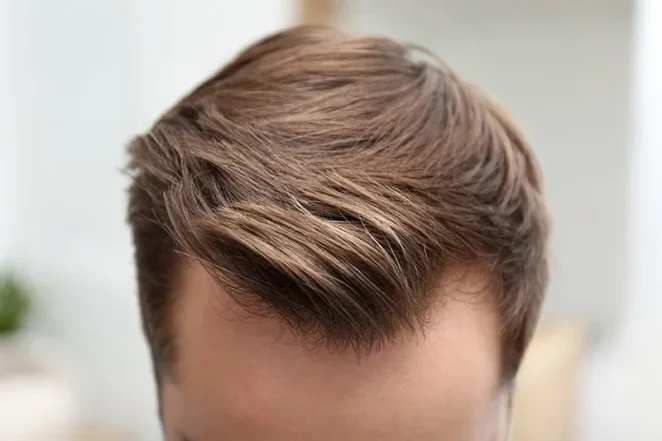
During hair transplantation, hair follicles are taken from one part of the body (usually the back of the head, called the donor site) and put into bald spots (called the recipient site). This process has become more advanced and natural-looking over the years and can stop hair loss for good.
Follicular Unit Transplantation (FUT) and Follicular Unit Extraction (FUE) are the two main ways hair transplantation is done.
FUT
A strip of skin with hair follicles is taken off from the donor spot. Then, this strip is cut into separate grafts and transplanted to the spot that needs them. One of the best things about FUT is that it can transfer a lot of grafts all at once.
FUE
A tiny punch tool is used to take out individual follicular units straight from the donor area. Then, these follicular units are moved to the area that needs them. Compared to FUT, FUE is known for leaving fewer scars and a shorter healing time.
Embrace Confidence and Renewed Self-Esteem!
Hair loss is a common problem that can make people feel bad about themselves and lower their confidence. Advanced hair loss treatments and solutions are now available, from invasive procedures like hair transplantation to non-invasive ones like PRP therapy and laser treatments. Now that you know your choices, you can regain your confidence and get a full head of hair.
Talking to a qualified medical professional or hair restoration specialist about your hair loss is the best way to find the best treatment for your needs and worries.



